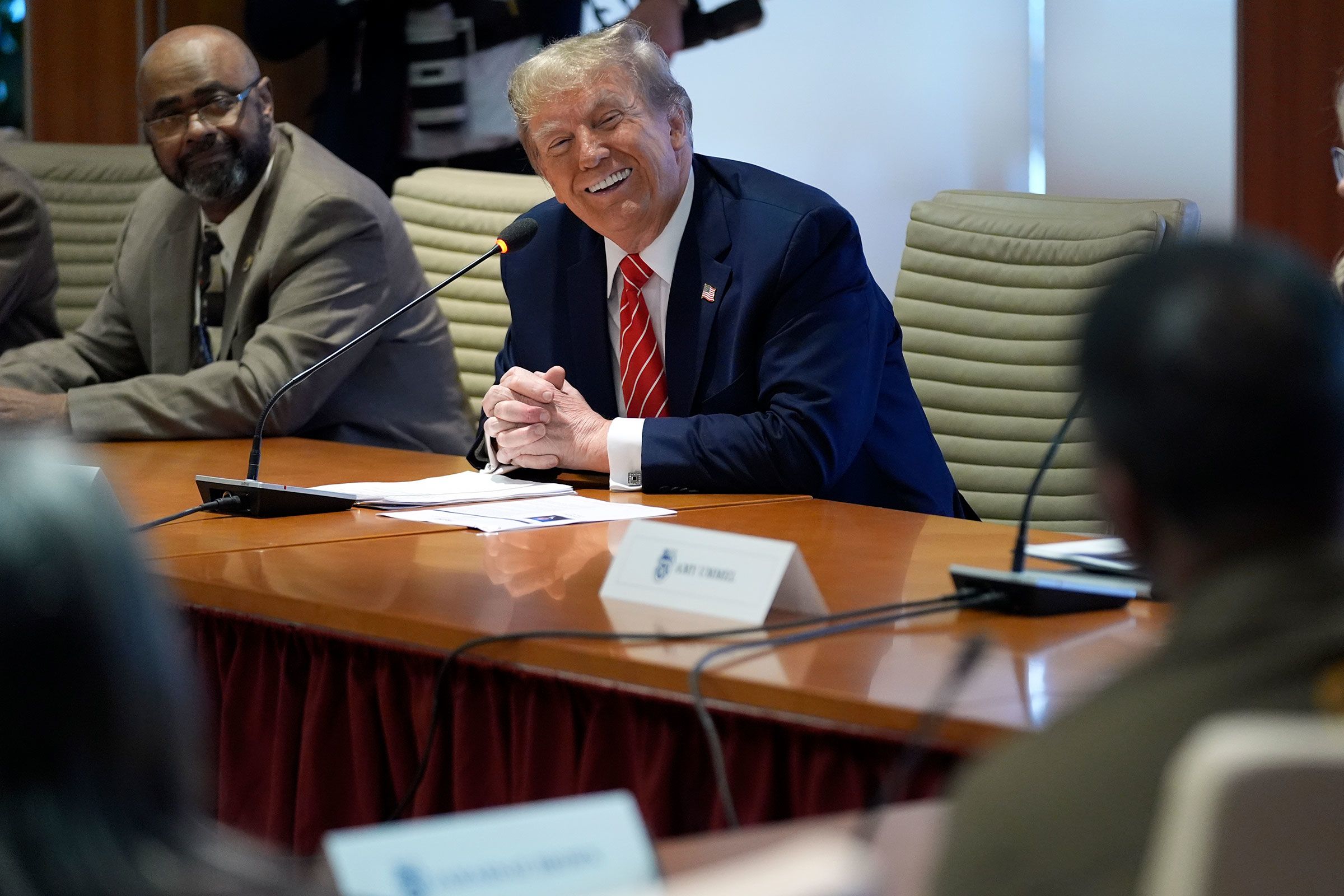As the political landscape continues to evolve, former President Donald Trump and current President Joe Biden find themselves locked in a struggle for the support of union members, a demographic traditionally leaning Democratic. Biden, scheduled to meet with the United Auto Workers in Michigan, is working to counter Trump’s advances towards this key group. Trump, on the other hand, is set to meet with the Teamsters in Washington.
Polling data indicates that Trump’s efforts are yielding results, with Biden grappling against the trend of union members gradually distancing from the Democratic party. Recent polling from the New York Times/Siena College in the six tightest swing states that Biden clinched in 2020 – Arizona, Georgia, Michigan, Nevada, Pennsylvania, and Wisconsin – shows a tie at 47% between Biden and Trump among union members for the 2024 vote. This is a significant shift from the 2020 election, where Biden led this group by an 8-point margin.
The union vote holds particular weight in Michigan, Nevada, and Pennsylvania, where between 14% and 15% of employees are represented by unions. This shift in union support may come as a surprise, given the historical association of union workers with the Democratic party. However, a closer look at the data reveals a more complex picture.
In the 2020 Cooperative Election Study survey by Harvard University, Biden won union workers, primarily residing in blue states, by 22 points. This is a stark contrast to Bill Clinton’s 31-point victory among union members in 1992, and even more so to Harry Truman’s 62-point lead over Republican Thomas Dewey in 1948. Truman’s populist campaign against Dewey, whom he painted as an elitist Republican, resonates with the populist image many Republicans, including Trump, strive to project today.
The shift in union support towards the GOP can be attributed to broader political trends, particularly the increasing affinity of non-college graduates towards the Republican party. In 2020, Trump won non-college graduate union members by 6 points. Biden’s victory among union members was primarily due to those who had graduated college, winning them by 46 points.
While the traditional image of a union worker might be someone on an assembly line, today’s union workers are more likely to be in education, training, and library occupations (32.7%). Public sector employees are also more likely to be union members (32.5%) than private sector employees (6.0%). As the face of union workers changes, so does their influence within the electorate.
While union workers represented about 30% of wage and salary workers when Truman defeated Dewey, today they represent about 10%. This declining share might suggest a diminishing influence, but given the close margins in recent elections, even small shifts within sizable voting blocs can have significant impacts. Union members often spearhead get-out-the-vote efforts in crucial battleground states, amplifying their influence beyond their own votes.
Furthermore, public sentiment towards unions remains largely positive, with about two-thirds of Americans approving of labor unions, one of the highest percentages since 1967. This is a significant increase from just 15 years ago when only 48% of Americans approved of unions. Therefore, being perceived as pro-union can be beneficial even among non-union voters.
Given these dynamics, as Biden and Trump potentially gear up for another electoral showdown, expect the battle for union votes to continue right up to Election Day.

